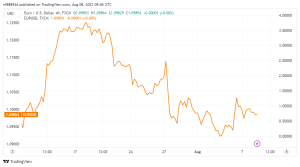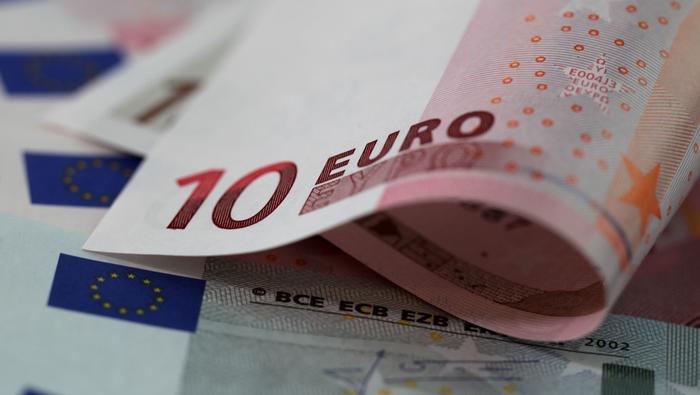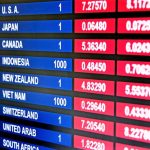Euro (EUR) remains pessimistic versus the US Dollar (USD).
At the start of the week, the Euro (EUR) remains pessimistic versus the US Dollar (USD). Leading a drop of EURUSD below the crucial psychological barrier of 1.1000 on Tuesday.
The commodity’s slide is exacerbated by negative statistics from China. Which show a significant contraction in both exports and imports in July. This confirms the view that the Chinese economy has yet to recover significantly.
Meanwhile, despite lower US yields, When measured by the USD Index (DXY), the Greenback maintains its position above the 102.00 mark.
Within the scope of the European Central Bank, the Consumer Expectation Survey predicts that inflation in the broader eurozone will be 2.3% in three years, down from 2.5%, and 3.4% in the following twelve months, down from 3.9%.
In Germany, final inflation data coincide with preliminary readings, with the Consumer Price Index (CPI) indicating a 6.2% year-on-year increase and a 0.3% month-on-month increase.
Across the Atlantic, hawkish Philadelphia Fed President Patrick Harker will deliver a speech later in the session. Furthermore, the session will see the release of Balance of Trade, Wholesale Inventories, the NFIB Business Optimism Index, and the IBD/TIPP Economic Optimism Index are all indicators of economic optimism.
The EURUSD maintains its offered stance below 1.1000.
On Tuesday, the EUR retests the 1.0970 level against the USD.
The USD Index (DXY) is clinging to gains above the 102.00 level.
The risk complex continues to lose steam in the first half of the week.
According to the ECB’s poll, inflationary pressures will ease in the coming months.
In July, Chinese exports and imports fell more than predicted.
According to CME Group’s FedWatch Tool, the Fed will not raise interest rates in H2 2023.
The Fed’s hike cycle may have stopped, according to speculation.
Investors’ focus is still on the US CPI, which is due on August 11.
Technical Outlook
A more dramatic recovery in Euro remains difficult at the moment, keeping the pair limited to the range below 1.1000.
The violation of the 1.0920 zone, where the monthly low and the interim 55-day and 100-day SMAs cross, exposes EURUSD to potential downside, potentially leading it to the 1.0833 (July 6) low.
This move could signal the start of a decline towards the important 200-day SMA at 1.0754, just ahead of the May low of 1.0635 (May 31). The March bottom of 1.0516 (March 15) is followed by the 2023 low of 1.0481 (January 6).

On the other hand, intermittent bullish attempts may lead the pair to test the weekly high at 1.1149 (July 27). Surpassing this level may relieve part of the negative pressure, maybe prompting the spot to investigate the 2023 peak at 1.1275 (July 18). Once this level is breached, meaningful resistance levels become scarce until the 2022 peak at 1.1495 (February 10), which is shortly followed by the round milestone of 1.1500.
Furthermore, the bullish outlook for EURUSD remains intact as long as the pair continues above the important 200-day SMA.









